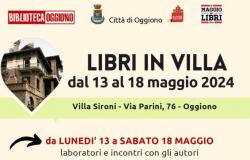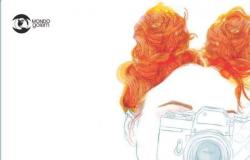On October 26th, after decades of closure, Palazzo Guiccioli opens the doors of the new Museum Complex wanted by the Cassa di Risparmio di Ravenna Foundation. In the ancient residence, completely restored, you can admire the Byron Museum, the Risorgimento Museum, as well as the new headquarters of the Doll Museum – Graziella Gardini Pasini Collection. The date chosen for the opening of the new cultural institution is not random. It recalls 26 October 1860, the date of the Teano meeting between Garibaldi and Vittorio Emanuele II, a fundamental moment of our Risorgimento. The President of the Ravenna Foundation, Ernesto Giuseppe Alfieri, announced the opening date of the new Museum Complex.
The restoration of Palazzo Guiccioli – for which free visits are already scheduled -, a complex that covers an area of 2,220 square metres, represented an important investment for the Cassa di Risparmio di Ravenna Foundation not only from an economic point of view but also cultural. This is the recovery project of a building that spans the centuries and which experienced its most glorious period in the decades between the eighteenth and nineteenth centuries, when the residence was hit by a large program of adaptation to the growing lineage of the family until it became one of the most coveted salons of the city, thanks also to its cosmopolitan vocation that Byron’s long stay helped to determine.
Added to the restoration work is the functionalisation of the building as a museum complex for the valorisation of an important period in local and national history. The historical part of the entire monumental compendium, which extends from the main street to the secondary street, is entirely decorated, with splendid frescoes that literally envelop the rooms, ceilings and walls. As is known, Palazzo Guiccioli is destined to host the Byron Museum, the only one in the world dedicated to the poet, and a promise for Anglo-Saxon tourism which has always been closely linked to the romantic poet, and second only to Shakespeare.
“With Palazzo Guiccioli and its museum complex – introduces the President of the Cassa di Risparmio di Ravenna Foundation, Ernesto Giuseppe Alfieri – the Foundation becomes an active subject in the field of protection, conservation and valorisation of the cultural, material and immaterial heritage, which over the of the nineteenth century makes Ravenna a small center that connects the local homeland to the national one, as well as the revival of libertarian demands that cross Europe and the new world. Ravenna therefore as alma mater, welcoming homeland of two great exiles of universal literature, Dante and Byron, who here found, together with protection, a fruitful space for poetic activity”.
With respect to the progress of the restoration and installation works, President Alfieri specifies that “after a series of causes of force majeure, which slowed down the timetable, we are now proceeding briskly. First, the pandemic which forced us to close the construction site for almost a year. Subsequently, the works were slowed down by anti-contagion procedures. Finally, following Covid there was a significant increase in the costs of raw materials which led to a further slowdown in activities and a substantial revision of the procurement contract. All this had a significant impact on execution times and led to an inevitable increase in costs. Now we can say that the many activities are fully operational and we can finally say that we are at a good point.”
The part of the complex that overlooks via Cavour is completed, while that on via Morigia is at a good level of progress. “Now – continues President Alfieri – hoping that there are no other impediments, we are working to inaugurate the museums, and open them to the public, on the occasion of the anniversary of the meeting in Teano between Garibaldi and Vittorio Emanuele II”.
“They will not be static museums. There will be physicality and multimedia but also events”, said Antonio Patuelli, president of the Cassa di Ravenna, pointing out that it will be a cultural hub “not only for the city. Ravenna has always been a city open to cultures, trade and international relations”. Patuelli then recalled the vocation of Ravenna, capital throughout history, but also for culture. The Byron Museum will be a museum for a European Italy. Byron will be a passport to attract people of culture and international tourists.”
Mayor Michele De Pascale expressed the gratitude of the Ravenna community, deeming Palazzo Guiccioli “an extraordinary intervention that fully enters the history of the city”. The mayor then underlined how the intervention was “possible because in this city there are those who have had the ability to implement investments of this type”. For De Pascale, the future opening of the museum center will give the right dimension to the history of Ravenna, making it an “absolute protagonist city in the history of the Risorgimento”. And above all, thanks to the Byronic heritage, it will allow “to continue dialogue with Europe and the United Kingdom”.
The next steps towards the official opening are already set. On May 25th the Italian Byron Society was formed, which will have its headquarters and offices in Palazzo Guiccioli. In the summer, on the occasion of the commemoration of Anita Garibaldi, a new visit to the palace will be held with the possibility of admiring the rooms of the Risorgimento museum. Finally, a photographic exhibition dedicated to Byron will open in the Franciscan Cloisters which will continue until October 26, the official opening date of Palazzo Guiccioli.
The complex and the three museums
Ravenna is preparing to inaugurate an important cultural center dedicated to the nineteenth century Ravenna and the Risorgimento struggles: Palazzo Guiccioli in fact houses, in addition to the Byron Museum, the Risorgimento Museum and the Doll Museum – Graziella Gardini Pasini Collection. The museum complex is an ambitious project which aims to bring back the patrimonial nuclei that pertain to the protagonists of the events reconstructed here, to the place that was the scene of the events, in a backwards journey aimed at highlighting memory and intangible contents, to starting from the literary production of Lord George G. Byron in the years of voluntary exile in Ravenna, where he lived, residing in Palazzo Guiccioli between 1820 and 1821.
On the main floor is the Museum of the Risorgimento which boasts, in addition to the many relics documenting the insurgent vocation of the City with its contribution to the uprisings of 1820-21, a section – of great importance – dedicated to Giuseppe Garibaldi and the popular diffusion of the its myth. President Alfieri explains that “Stefania Craxi, president of the Bettino Craxi Foundation, has granted the Garibaldi collection that belonged to her father Bettino Craxi, a well-known devotee of the Hero, on deposit for 20 years. Relics from Florence are also part of this collection, thanks to the availability of Cosimo Ceccuti, President of the Spadolini Nuova Antologia Foundation. In fact, it is known how Bettino Craxi and Giovanni Spadolini, both great fans of the Hero of the Two Worlds, competed to win the purchase of objects belonging to Garibaldi”.
The exhibition itinerary highlights, in filigree, the different orientation of the two statesmen, in one case oriented towards the heirloom in its iconographic and even holographic contents, in the other, towards the documentary trace that attests to the passages, the rooting of thought, the effects in consensus. The Museum of the Risorgimento in Ravenna is therefore characterized by presenting, together with the legacies of the many people from Ravenna who donated their objects to save them from oblivion, the extraordinary documentation around the soon mythologized figure of Garibaldi, certainly of strong appeal for history enthusiasts Risorgimento. “The Museum of the Risorgimento – continues President Alfieri – also houses an important collection of Masonic medals from the Guerrini legacy and granted in storage to the Foundation for 20 years. All pieces of great historical and artistic importance.”
Finally, the third museum which is preparing to be set up in the Palazzo Guiccioli complex is connected to the nineteenth-century theme: it is the Doll Museum – Graziella Gardini Pasini Collection, one of the most important at European level for the value and quality of the pieces, intended for the body detached from the second court.
“We are certain – concludes the president of the Cassa di Risparmio di Ravenna Foundation – that this new cultural and museum centre, dedicated to the nineteenth century, will be an important element of attraction for national and international tourism. Such an ambitious project would not have been possible without the joint will of the Cassa di Risparmio di Ravenna Foundation and the Municipality of Ravenna, with the further, competent support of the Classense Library and MAR-Museo d’Arte of the city of Ravenna, the generous and far-sighted participation in the project of the Bettino Craxi Foundation and the Spadolini Nuova Antologia Foundation, the passionate participation of its creators: above all Aurea Progetti Ravenna for the recovery of the building and its functionalisation, of the Ravenna Restoration Laboratory for the recovery of decorative cycles and floors together with the many connected to the Project Unit. Such an ambitious project would not have been possible without extensive team collaboration. Many credits and many thanks to those who have made this construction site possible with their generous dedication.”
Tags: host Byron Risorgimento doll museums




